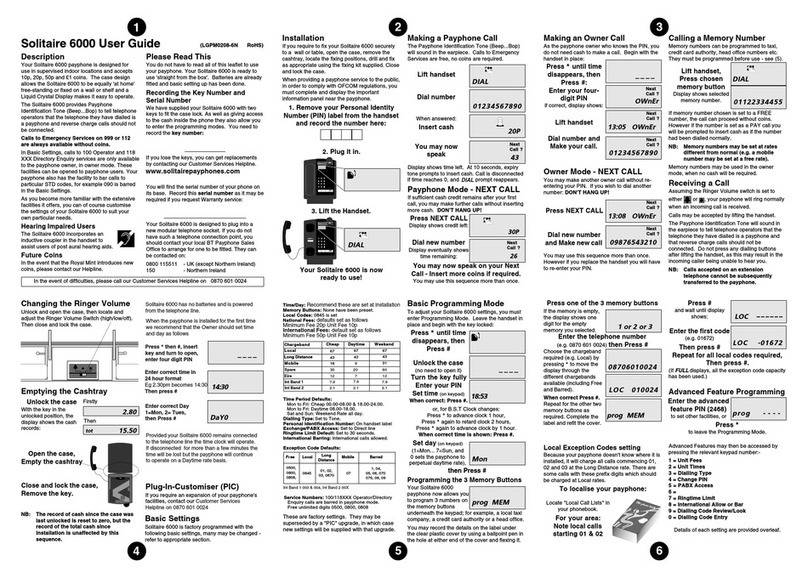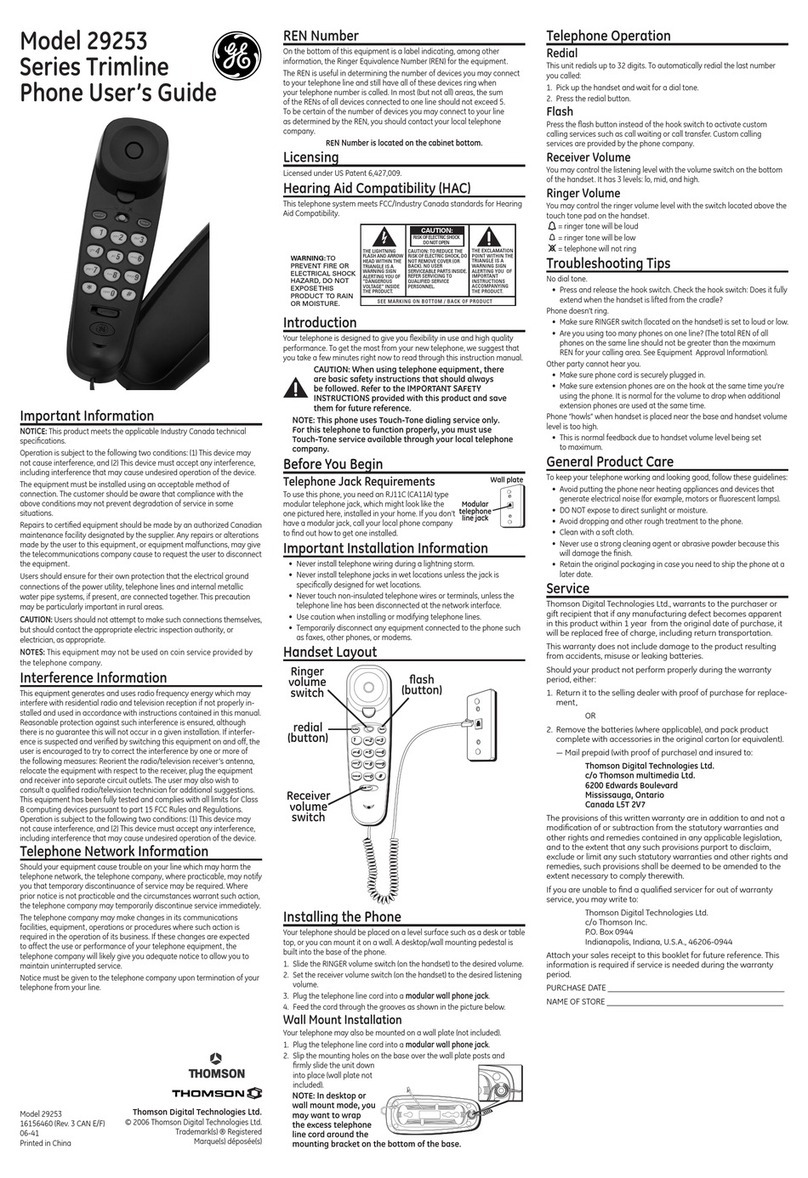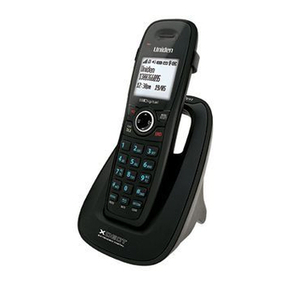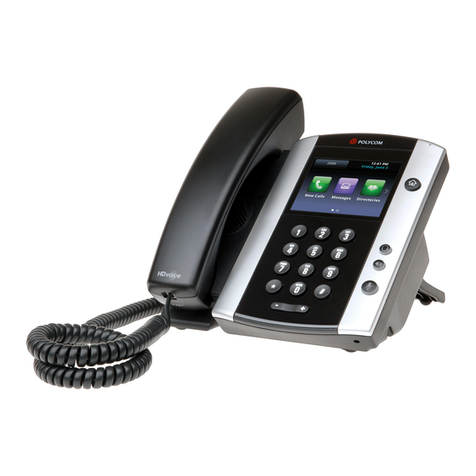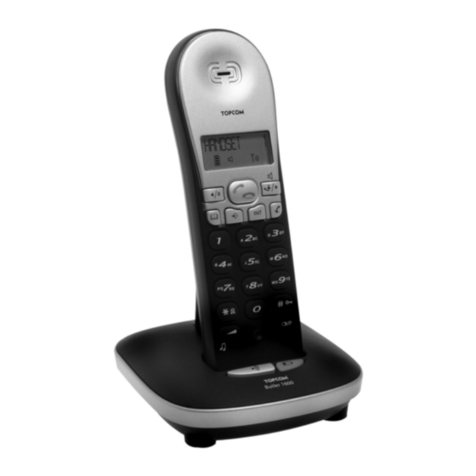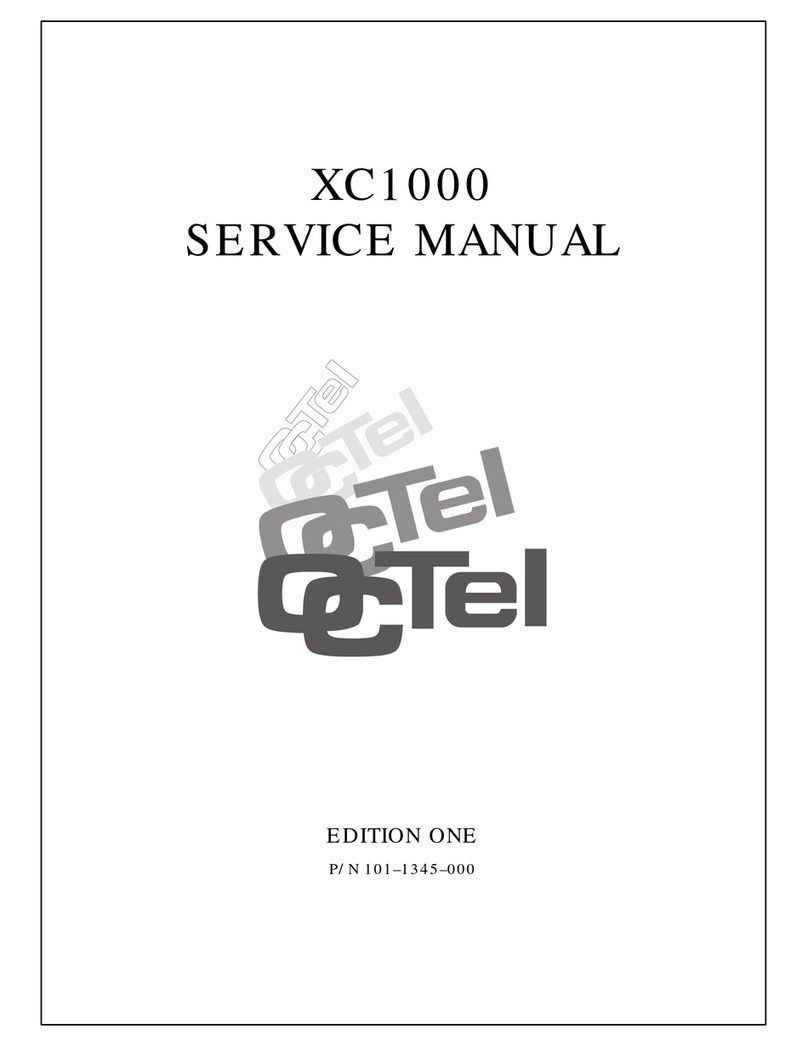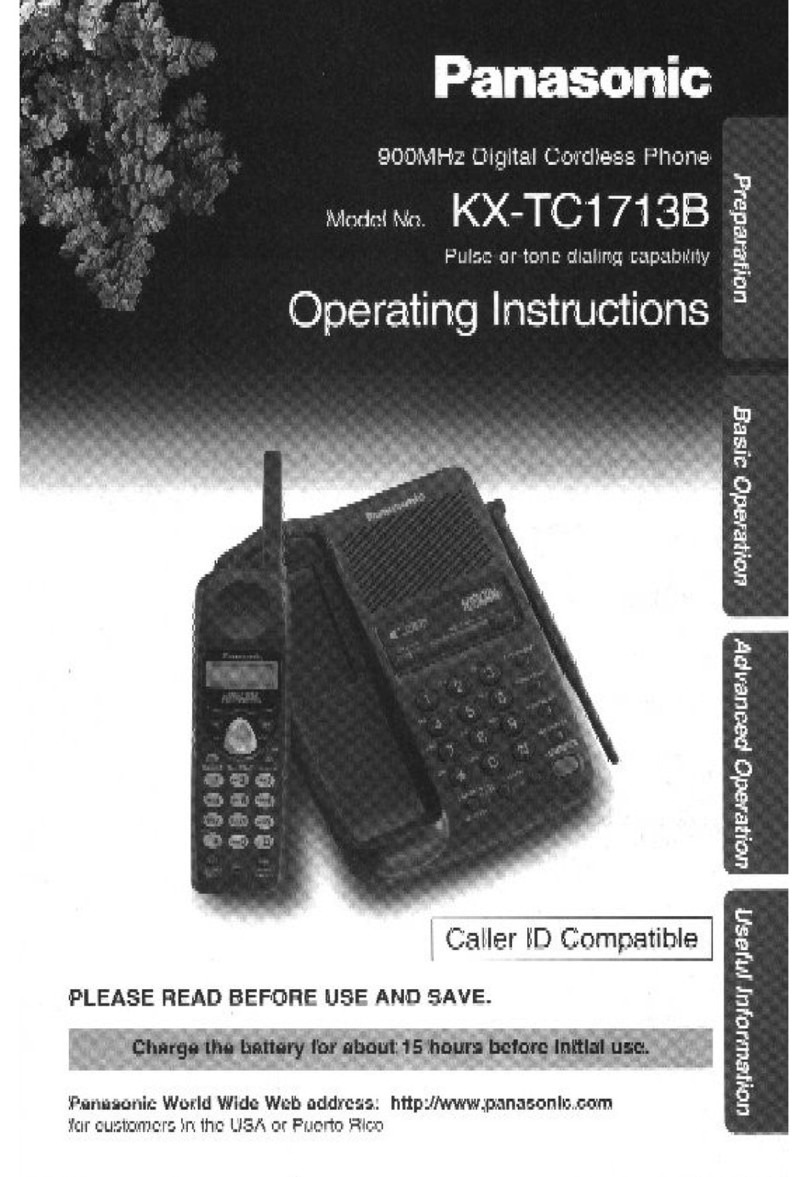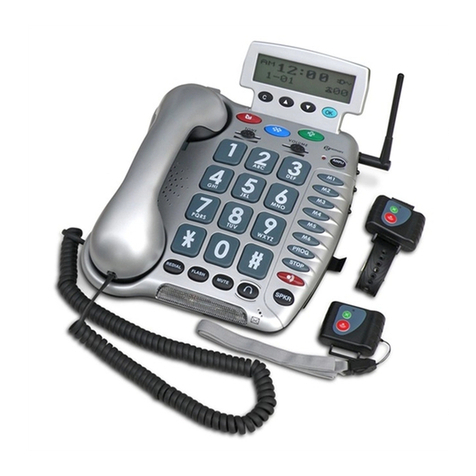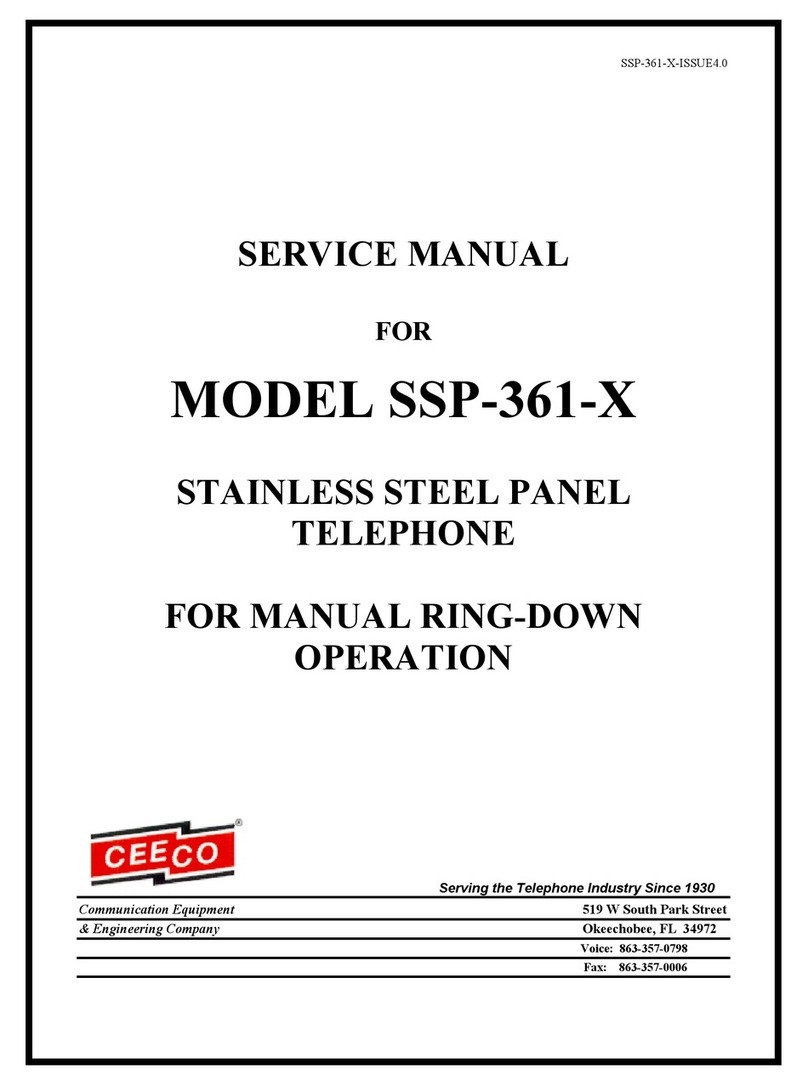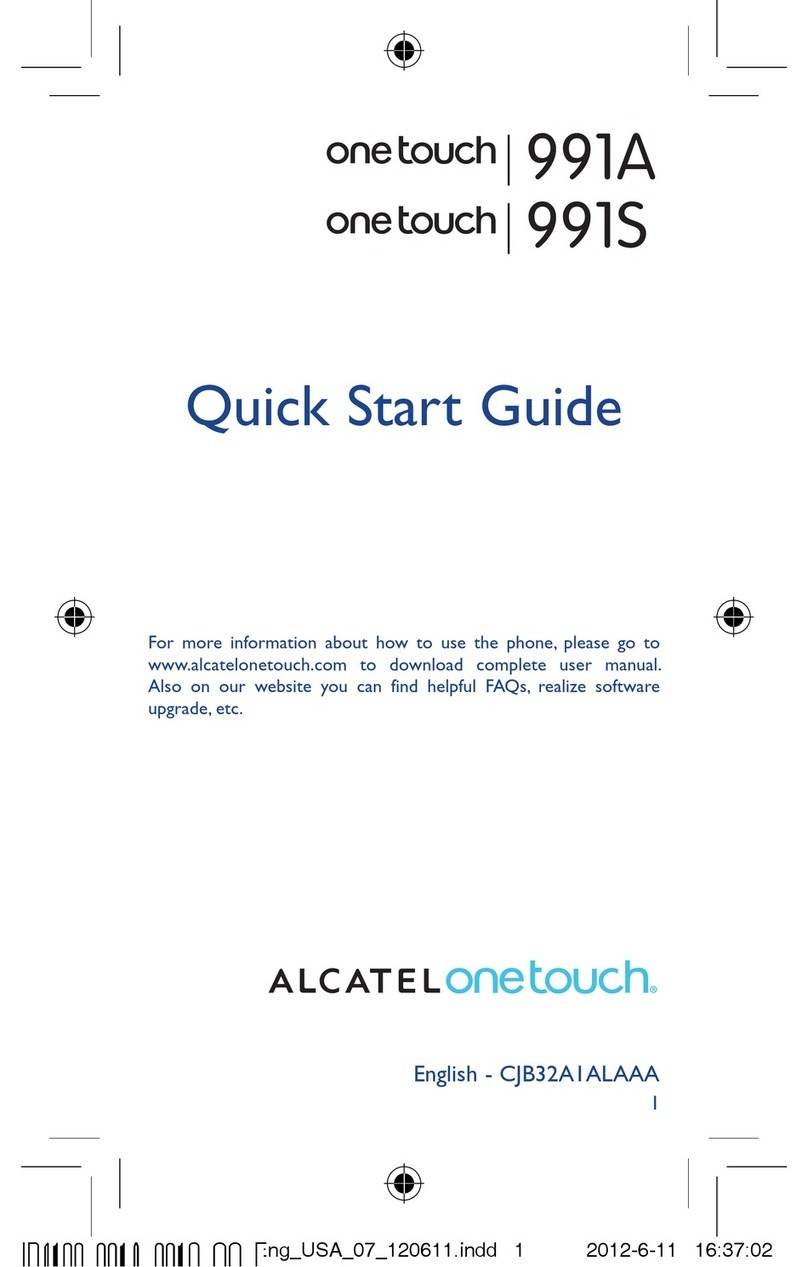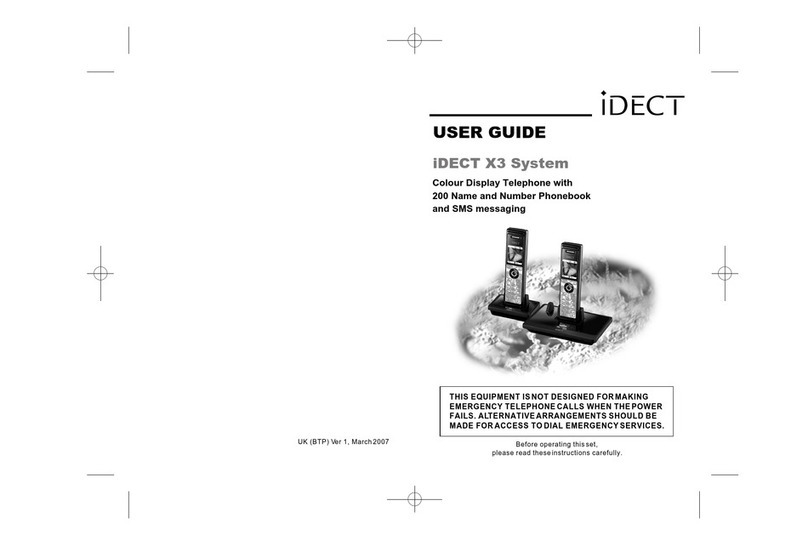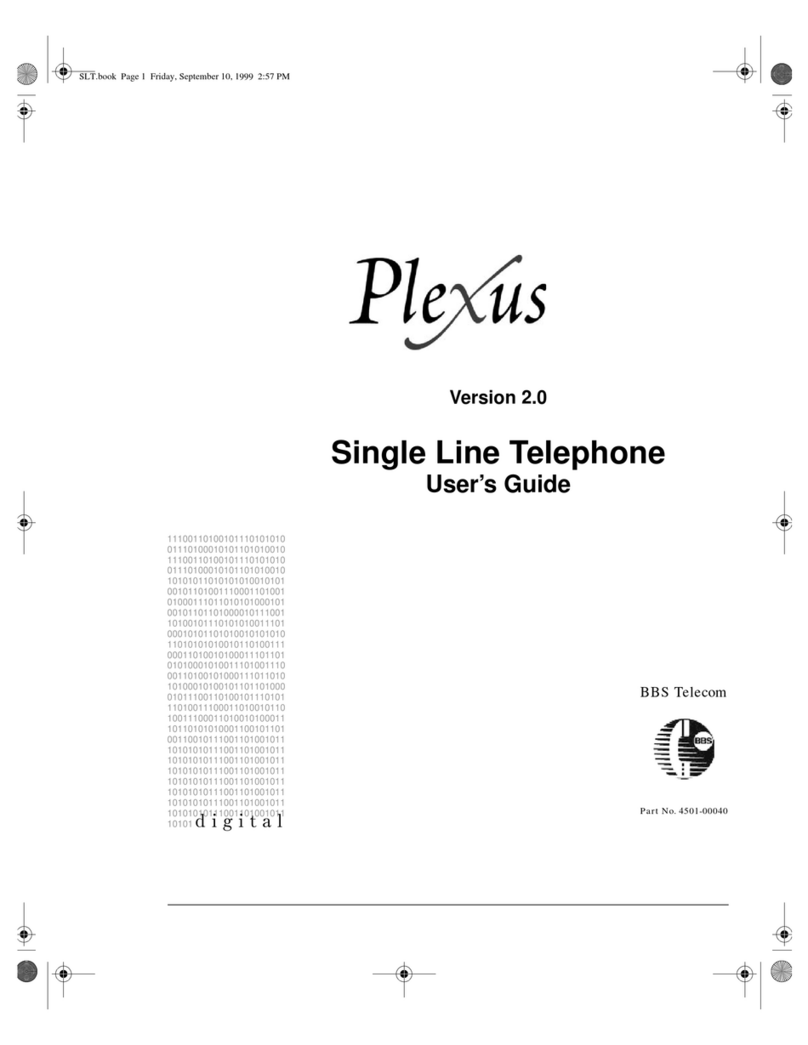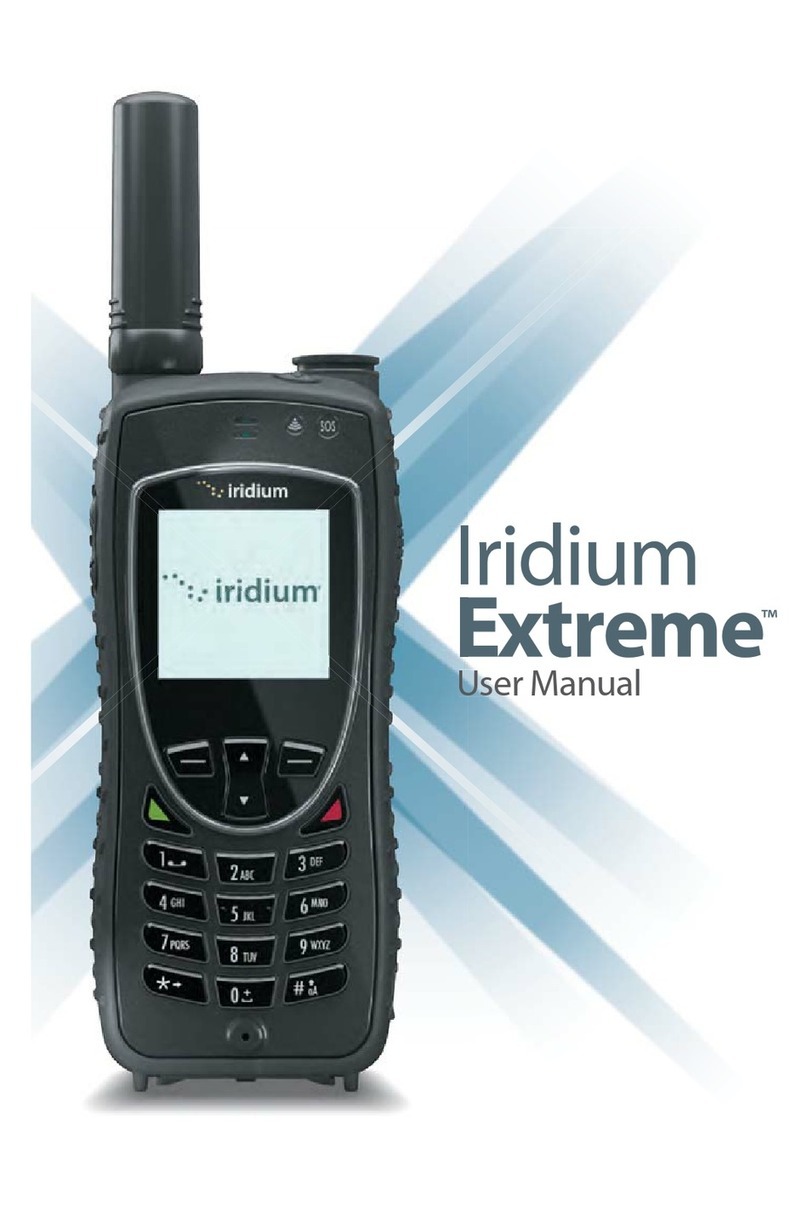Solitaire 6000 User manual

Please Read This
You do not have to read all of this leaflet to use
your payphone. Your Solitaire 6000 is ready to
use ‘straight from the box’. Batteries are already
fitted and basic setting up has been done.
Recording the Key Number and
Serial Number
We have supplied your Solitaire 6000 with two
keys to fit the case lock. As well as giving access
to the cash inside the phone they also allow you
to enter the programming modes. You need to
record the key number:
If you lose the keys, and you know the key
number, you can get replacements by contacting
our Customer Services Helpline.
You will find the serial number of your phone on
its base. Record this serial number as it may be
required if you request Warranty service:
Your Solitaire 6000 is designed to plug into a
new modular telephone socket. If you do not
have such a telephone connection point, you
should contact your local BT Payphone Sales
Office to arrange for one to be fitted. They can
be contacted on:
0800 115511 - UK (except Northern Ireland)
150 - Northern Ireland
456
3
2
1
Solitaire 6000 User Guide(PM 0208 Issue.10 - 11/2001)
Description
Your Solitaire 6000 payphone is designed for
use in supervised indoor locations and accepts
10p, 20p, 50p and £1 coins. The case design
allows the Solitaire 6000 to be equally ‘at home’
free-standing or fixed on a wall or shelf and a
Liquid Crystal Display makes it easy to operate.
The Solitaire 6000 provides Payphone
Identification Tone (Beep...Bop) to tell telephone
operators that the telephone they have dialled is
a payphone and reverse charge calls should not
be connected.
Calls to Emergency Services on 999 or 112
are always available without coins.
In Basic Settings, calls to 100 Operator and 142/
192 Directory Enquiry services are only available
to the payphone owner, in owner mode. These
facilities can be opened to payphone users. Your
payphone also has the facility to bar calls to
particular STD codes, for example 090 is barred
in the Basic Settings.
As you become more familiar with the extensive
facilities it offers, you can of course customise
the settings of your Solitaire 6000 to suit your
own particular needs.
Hearing Impaired Users
The Solitaire 6000 incorporates an
inductive coupler in the handset to
assist users of post aural hearing aids.
Future Coins
In the event that the Royal Mint introduces new
coins, please contact our Helpline.
Making a Payphone Call
The Payphone Identification Tone (Beep...Bop)
will sound in the earpiece. Calls to Emergency
Services are free, no coins are required.
Lift handset
Dial number
When answered:
Insert cash
You may now
speak
01234567890
20P
55
Display shows time left. At 10 seconds, expiry
tone prompts to insert cash. Call is disconnected
if time reaches 0, and
DIAL
prompt reappears.
Payphone Mode – NEXT CALL
If sufficient cash credit remains after your first
call, you may make further calls without inserting
more cash. DON’T HANG UP!
Press NEXT CALL
Display shows credit left:
Dial new number
Display eventually shows
time remaining:
You may now speak on your Next
Call - Insert more coins if required.
You may use this sequence more than once.
30P
26
– – – –
13:05 OWnEr
01234567890
13:08 OWnEr
09876543210
01122334455
Installation
If you require to fix your Solitaire 6000 securely
to a wall or table, open the case, remove the
cashtray, locate the fixing positions, drill and fix
as appropriate using the fixing kit supplied. Close
and lock the case.
When providing a payphone service to the public,
in order to comply with OFTEL regulations, you
must complete and display the important
information panel near the payphone.
1. Remove your Personal Identity
Number (PIN) label from the handset
and record the number here:
2. Plug it in.
2.80 15.50
17:28
Mon
18:53
08706010024
prog MEM
DIAL DIAL
1 or 2 or 3
Programming the 3 Memory Buttons
Your Solitaire 6000
payphone now allows you
to program 3 numbers on
the memory buttons
underneath the keypad; for example, a local taxi
company, a credit card authority or a head office.
You may record the details on the label under
the clear plastic cover by using a ballpoint pen in
the hole at either end of the cover and flexing it.
Press one of the 3 memory buttons
If the memory is empty,
the display shows one
digit for the empty
memory you selected.
Enter the telephone number
(e.g. 0870 601 0024)
then Press #
Choose the chargeband
required (e.g. Local) by
pressing *to move the
display through the
different chargebands
available (including Free
and Barred).
When correct Press #.
Repeat for the other two
memory buttons as
required. Complete the
label and refit the cover.
Basic Programming Mode
To adjust your Solitaire 6000 settings, you must
enter Programming Mode. Leave the handset in
place and begin with the key locked:
Press *until time
disappears, then
Press #
Unlock the case
(no need to open it)
Turn the key fully
Enter your PIN
Set time
(on keypad)
When correct: Press #.
or, for B.S.T Clock changes:
Press *to advance clock 1 hour,
Press *again to retard clock 2 hours,
Press *again to advance clock by 1 hour.
When correct time is shown: Press #.
Set day
(on keypad)
(1=Mon... 7=Sun, and
0 sets the payphone to
perpetual daytime rate),
then Press #
Plug-In-Customiser (PIC)
If you require an expansion of your payphone’s
facilities, contact our Helpline for details.
Basic Settings
Solitaire 6000 is factory programmed with the
following Basic Settings. Many may be changed -
refer to the appropriate section.
Time/Day: Both set to current. (Check B.S.T 1 Hr)
Memory Buttons: None have been preset.
Local Codes: 0345, 0645, 0845 and 01399 are set.
National & International Unit Fees: Minimum Deposit
set to 20p, and Unit Fee set to 10.0p.
Unit Times (in seconds):
dnabegrahCpaehCemityaDdnekeeW
lacoL 767676
ecnatsiDgnoL 343434
eliboM 218 21
NCP 619 61
Time Period Defaults:
Mon to Fri: Cheap 00.00-08.00 & 18.00-24.00.
Mon to Fri: Daytime 08.00-18.00.
Sat and Sun: Weekend Rate all day.
Dialling Type: Set to Tone.
Personal Identification Number: On handset label
Exchange/PABX Access: Set to Direct Exchange Line
Mercury Access: Set to Off
Ringtime Limit Default: Set to 45 seconds.
International Barring: International calls are allowed.
Exception Dialling Code Defaults:
eerFlacoL gnoL ecnatsiD eliboMNCPderraB
,0050 ,0080 ,8080 00800
,5430 ,5460 ,5480 99310
,20,10 ,0780,50 0990
,40,30 ,5850 ,9850 80,70
90
,670,60,330,1 ,46380,0280 ,090,980,9380 7800,1990,0390
Service Numbers: 100/142/192 Operator/Directory
Enquiry calls are barred in Payphone Mode.
Free unlimited digits:144, 0800, 0808, 0500, 00800
These are factory settings. They may be
superseded by a “PIC” upgrade, in which case
new settings will be supplied with that upgrade.
Changing the Batteries
NB: The PIN, Time and Day and any other
settings you have made may be lost if
you do not perform this swiftly. Read
the information below before you
change the batteries.
When the batteries are becoming exhausted, a
BAtt LoW
warning will be displayed.
Use only new alkaline cells (4xAA cells, LR6 or
MN1500), and not rechargeables.
NB: Emergency calls can still be made when
the batteries are exhausted.
To change the batteries do not unplug
your Solitaire 6000, simply lift the handset.
Unlock and open
the case,
Press the battery
release button,
Remove the
battery box.
Remove the old
batteries,
Insert the new
batteries
Changing the Ringer Volume
Unlock and open the case, then locate and
adjust the Ringer Volume Switch (high/low/off).
Then close and lock the case.
Unlock the case
With the key in the
unlocked position, the
display shows the cash
records:
Open the case,
Empty the cashtray
Emptying the Cashtray
6
OWnEr
– – – –
prog MEM
LOC 010024
Local Exception Codes setting
Because your payphone doesn’t know where it is
installed, it will charge all calls commencing with
01 and 02 at the Long Distance rate. There are
some calls with these prefix digits which should
be charged at Local rates.
To localise your payphone:
NB: The record of cash since the case was
last unlocked is reset to zero, but the
record of the total cash since
installation is unaffected by this
sequence.
Making an Owner Call
As the payphone owner who knows the PIN, you
do not need cash to make a call. Begin with the
handset in place:
Press *until time
disappears, then
Press #:
Enter your four-
digit PIN
if correct, display shows:
Lift handset
Dial number and
Make your call.
Owner Mode – NEXT CALL
You may make another owner call without re-
entering your PIN. If you wish to dial another
number: DON’T HANG UP!
Press NEXT CALL
Dial new number
and Make new call
You may use this sequence more than once.
However if you replace the handset you will have
to re-enter your PIN.
Calling a Memory Number
Memory numbers can be programmed to taxi,
credit card authority, head office numbers etc.
They must be programmed before use - see (5).
Lift handset,
Press chosen
memory button
Display shows selected
memory number.
If memory number chosen is set to a FREE
number, the call can proceed without coins.
However if the number is set as a PAY call you
will be prompted to insert cash as if the number
had been dialled normally.
NB: Memory numbers may be set at rates
different from normal (e.g. a national
number may be set at a local rate).
Memory numbers may be used in the owner
mode, when no cash will be required.
Receiving a Call
Assuming the Ringer Volume switch is set to
either or , your payphone will ring normally
when an incoming call is received.
Calls may be accepted by lifting the handset.
The Payphone Identification Tone will sound in
the earpiece to tell telephone operators that the
telephone they have dialled is a payphone and
that reverse charge calls should not be
connected. Do not press any dialling buttons
after lifting the handset, as this may result in the
incoming caller being unable to hear you.
NB: Calls accepted on an extension
telephone cannot be subsequently
transferred to the payphone.
In the event of difficulties, please call our Customer Services Helpline on 0870 601 0024
since case
last unlocked since
installation
BATTERIES
(Correct polarity is essential!)
Replace the Battery Box, close and
lock the case & replace the handset.
The display shows the
correct time and normal
function is restored:
If display shows – – – –
refer to Page (5).
The phone book
Locate “Local Call Lists” in
your phonebook.
For your area:
Note local calls
starting 01 & 02
Press #
and wait until display
shows:
Enter the first code
(e.g. 01672)
Then press #
LOC ------
prog - - - -
LOC -01672
Repeat for all local codes required,
Then press #.
(If
FULL
displays, all the exception code capacity
has been used.)
Advanced Feature Programming
Enter the advanced
feature PIN (2468)
to set other facilities, or
Press *
to leave the Programming Mode.
Advanced Features may then be accessed by
pressing the relevant keypad number:-
1 = Unit Fee (Not available if PIC fitted)
2 = Unit Times
3 = Dialling Type
4 = Change PIN
5 = PABX Access
6 = Mercury Access
7 = Ringtime Limit
8 = International Allow or Bar
9 = Dialling Code Review/Look
0 = Dialling Code Entry
Details of each setting are provided overleaf.
Next
Call ?
Next
Call ?
Next
Call ?
Next
Call ?
Next
Call ?
Next
Call ?
Next
Call ?
Close and lock the case,
Remove the key.
12:27
DIAL
123
456
789
0#
✱
SOLITAIRE
6000
1020 50 £1
NEXT
CALL
3. Lift the Handset.
123
456
789
0#
✱
EMERGENCY
DIAL:999
Tel.No
NEXT
CALL
SOLITAIRE
6000
1020 50 £1
Your Solitaire 6000 is now
ready to use!
55 55 55
55
55
55

789
121110
Approval
Your Solitaire 6000 has been approved to provide
the following:
• A public payphone service.
• For exchanges supporting loop disconnect (LD)
and multi frequency (MF) dialling.
• Inductive coupling to appropriate hearing aids.
• Call barring.
• Compatible for use with call routing apparatus.
– call routing apparatus means PBXs, PABXs,
key systems, dealerboards, key and lamp units,
or automatic call distributors which provide a
BS6312 compatible port and meet the
requirements of BS6317 for simple telephones.
• The Solitaire 6000 is only approved for use as
an extension instrument to compatible PBXs.
Your supplier should be consulted for an up to
date list.
• It cannot be guaranteed that the Solitaire 6000
will operate correctly under all possible
conditions of connection to compatible PBXs.
Any difficulties should be referred to your
supplier.
• The Solitaire 6000 is not approved for use on
PABX systems which return a secondary
dialling tone if the delay setting is programmed
to less than 3 seconds. Consult the supplier of
your PABX if you are in any doubt.
• Solitaire 6000 is approved for use on a 1 + 1
carrier system.
• Safety: Solitaire 6000 is only approved for
operating at Telecommunication Network
Voltage (TNV). Do not attempt to alter or add
additional connections to the Solitaire 6000.
Any other usage will invalidate the approval of the
apparatus if as a result it then ceases to conform to
the standards against which approval was granted. Solitaire 6000 is manufactured in China under licence
for Solitaire Payphones Ltd.
Faults
If no Time of Day is displayed whilst the Solitaire
6000 is idle, the unit has lost its programming.
– – – –
BAtt LoW
20:58
dirEct LInE
PIn 2345
PIn 6789 CUtOFF 45
Int bArrEd Int AlloW
- Pb ACCESS
3 Pb PAUSE
999 or 112
Solitaire 6000 meets the European Directives
1999/5/EC for Radio & Telecommunication
Terminal Equipment
LOC Look
The display would show:
Or if, when the key is
turned, display shows:
the unit has lost its
programming.
0 - Dialling Code Entry
Allows you to enter specific national dialling codes
(and their chargebands). For example, your
network provider may introduce a new dialling
code at Premium Rate and this feature enables
you to bar such a service.
NB: All unallocated numbers in the range 03
to 08 are automatically set to the Mobile
Rate.
Chargebands available are: Local, Long Distance,
Mobile, PCN, Free and Barred.
Enter Advanced Programming Mode
Press 0 on the keypad
Choose chargeband to be entered by pressing *
(Loc, Long, Mob, PCN, Free or Bar
or
DEL
to delete a previously entered code.)
8 - Dialling Code Review/Look
Allows you to review the various dialling codes
(and their chargebands) which are programmed
into the Solitaire 6000, including your entries and
Basic Settings. It is not possible to change
categories in this mode. Chargebands are: Local,
Long Distance, Mobile, PCN, Free and Barred.
Enter Advanced Programming Mode
Press 9 on the keypad
Choose chargeband for review by pressing *
repeatedly (Loc, Long, Mob, PCN, Free or Bar)
then Press #
The display shows the
codes, in entry order,
together with assigned
chargeband.
7 - International Allow or Bar
Use this procedure if you wish to prevent
International calls being made on your payphone.
Enter Advanced Programming Mode
Press 8 on the keypad
Use *to swap between allowing and barring
International Calls.
Press # to return to
prog
prompt.
6 - Ringtime Limit
Because your Solitaire 6000 does not receive a
signal from the exchange to tell it when an
outgoing call has been answered, a Ringtime
Limit is set. This controls how long the payphone
will allow the call to ring if no cash is inserted.
45 seconds is recommended. Only change this
value only if you experience difficulties.
Enter Advanced Programming Mode
Press 7 on the keypad
Enter time (in seconds)
allowed for phone to ring
before disconnection.
Press # to return to
prog
prompt.
5 - PABX Access
If you require your Solitaire 6000 to work as an
extension to a PABX system, these adjustments
must be made correctly.
Enter Advanced Programming Mode
Press 5 on the keypad
Then press #.
If you selected PABX,
then the display shows:
Enter the PABX
access digit
(usually 9)
then press #.
The display then shows:
- the presending pause (e.g. 3 seconds: ask your
PABX maintainer if necessary for advice.)
Enter a single digit for the pause,
then
Press # to return to
prog
prompt.
BT Chargecard (144)
Your Solitaire 6000 is already set to allow access
to the BT Chargecard system and needs no
further adjustment.
If you wish to prevent access to the service see
Page (10) on exception code deletion.
4 - Change PIN
Enter Advanced Programming Mode
Press 4 on the keypad
Display shows current
PIN:
You may enter a
new 4 digit PIN
Be sure to record it
safely.
1 - Unit Fee
Pb
LOC - - - - - -
then Press #
Display changes to allow
entry or deletion of the
dialling code:
Pressing # allows the next number to be entered.
Press # to return to
prog
prompt.
LOC Ch 55
2 - Unit Times
You may press # at any time in the sequence to
step to the next section. Lifting the handset
during programming returns you to the
payphone mode.
Enter Advanced Programming Mode
Press 2 on the keypad
Display shows
LOCAL CHEAP rate is
set to 55 seconds:
Press # to step through and set
Long Distance, Mobile and PCN.
When these have been entered,
Press #, then
Press # to return to
prog
prompt.
PULSE/tOnE
3 - Dialling Type
Enter Advanced Programming Mode
Press 3 on the keypad
Display shows current
dialling mode:
Press *to swap
between PULSE and TONE
Press # to return to
prog
prompt.
Pressing # advances to next number. You may
repeat this for each chargeband. You may exit
from this routine at any time by pressing *.
Press # to return to prog prompt.
Ringer Equivalence Number
All items of telephone equipment have a Ringer
Equivalence Number (REN). The REN is used to
calculate how many items may be connected to
the same telephone line.
The Solitaire 6000 has a REN of 2. A total REN
of 4 is allowed on any one line.
Extension Telephones
To avoid unauthorised chargeable calls being
made on an extension phone connected to your
payphone line, any extension should be in a
secure location.
NB: Calls accepted on an extension
telephone cannot be subsequently
transferred to the payphone.
PAYPHOnE OK
FAIL
Self Test
If you suspect a problem:
Insert and turn the key,
then Press *.
If the display shows this:
replace the batteries -
see Page (4).
this, it may indicate:
• Batteries need replacing
• Cashbox is full
• Coin jam in mechanism
If there is a coin jammed, you should try to clear it.
If there is no dial tone
and the display shows:
(i.e. time but no
payphone symbol)
OFTEL Regulations
If you are providing a payphone service to members of the
public, regulations introduced by OFTEL in 1988 make it a
legal requirement for you, the payphone owner, to display a
notice alongside your payphone.
The notice must carry the following information:
• Details of any limitations of access to the operator
services.
• Information on whether unused coins are returned to the
user.
• The minimum payment required to make a call.
• The method of payment, that is, types of coin the
payphone will accept.
• The full postal address of the payphone, to help with
emergency calls.
• The identity of the person to be contacted in case of
complaints.
• The basis of charging for calls from the payphone.
• A clear indication that 999 and 112 calls are free.
• When an extension is connected to the payphone, a
warning that this may affect the privacy of payphone
calls.
0006eriatiloSaroferawolebserugifehT ekamuoyfI.sgnitteScisaBstihtiw resUehtdnemaTSUMuoysegnahc .ecitoN
0006eriatiloS
elbaliavA/derraBsllaCrotarepO001
denruteRtoNsnioCdesunU
tnemyaPmuminiMp01
1£,p05,p02,p01rewsnAnOyaP
sserddA
reniatniaM/renwO
etunim/p7sllaClacoL etunim/p62sllaClanoitaN etunim/p003sllaClanoitanretnI
eerFsllaC211/999
We have included a copy of a suitable
notice with your Solitaire 6000.
You will need to complete some of the
details yourself.
Press # to return to
prog
prompt.
If, when the handset is lifted the display shows
Use *to swap between DIRECT LINE or PABX.
DEL - - - - - -
(If you wish to delete any
exception code you must
select
DEL
then press #.
Enter the code to be
deleted and then press #,
and repeat as required.) Check the payphone is correctly plugged in to
the wall socket.
For ease of maintenance Solitaire 6000 is fitted
with a quick release hinge. Open the case, push
back the hinge and remove the payphone top
from the base.
The display should show:
If the display shows
FAIL
proceed to the Faults
section which follows.
Continue with Page (5) of this guide.
2
11p/minute
11
These are set by the fitted PIC:
Nat. Minimum Fee 20p
Nat. 1st Unit Fee 10p
Nat. Subsequent Unit Fee 10p
Int . Minimum Fee 20p
Int. 1st Unit Fee 10p
Int. Subsequent Unit Fee 10p
Enter a new value
Then Press #
Display moves to LOCAL DAYTIME rate which
may be set in the same way.
Then Press #
Display moves to LOCAL WEEKEND rate which
may be set in the same way.
NB: Changing these values will affect call
charges. Such changes must be incorporated in
the payphone wall notice in order to comply with
OFTEL regulations
Other Solitaire Telephone manuals
